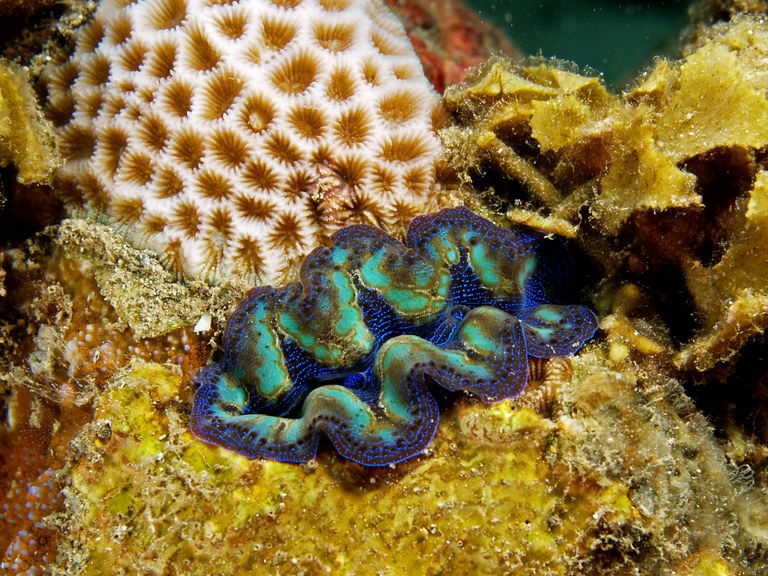The researchers identify numerous roles giant clams play:
- Provides direct food for a wide range of predators and scavengers. Fish, shrimps, crabs, sponges, urchins, starfish, snails, octopus, worms, and a lot more animals of every phylum under the sea all eat clams for sustenance.
- Provides additional nutrition for organisms that eat the clam’s expelled waste, zooxanthellae, and gametes.
- Processes and purifies seawater, thus counteracting eutrophication (in other words, keeping nutrient levels down).
- Serve as reservoirs for zooxanthellae, releasing them “for other zooxanthellate-dependent species to ‘take up’, hence contributing to the wider coral reef ecosystem.” Think of clams as zooxanthellae banks.
- Adds great amounts of calcium carbonate to coral reefs.
- Bioerode existing calcium carbonate structures (e.g. coral, live rock) releasing life-building materials back into the local ecosystem. The research specifically cites Tridacna crocea and their boring activities.
- Gives shelter to a host of animals within its mantle scutes.
- Provides a secure, reliable anchoring point for many organisms to colonize on.
- Enhances topography, IOW changing the water flow around them to favor other life on the reef.
- Are host to commensal and ectoparasitic organisms (although we’re sure these clams would rather not host parasites if given a choice)
In a nutshell, giant clams play big roles in making other reef life possible … even if it means some of this life will eat them. The open-access research is published in Biological Conservation.
P.S. The paper uses James W. Fatherree, Julian Sprung, and Charles Delbeek’s works as references. Go reefkeeping!









0 Comments